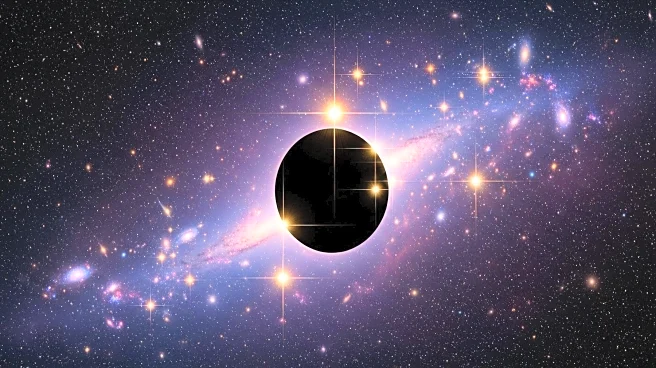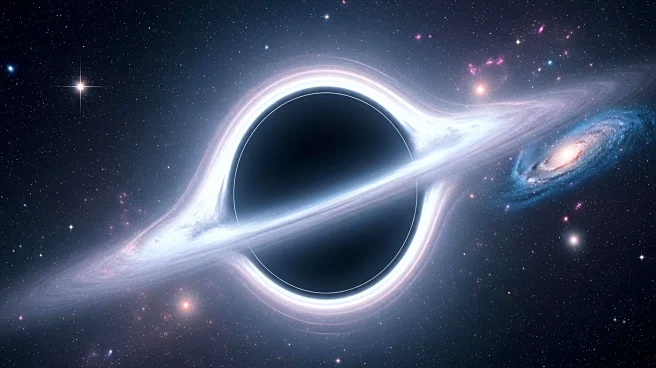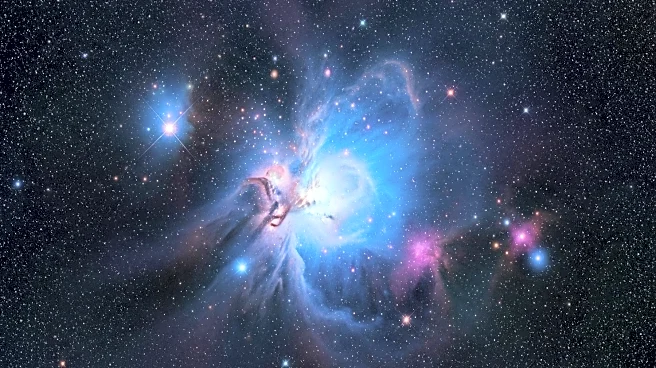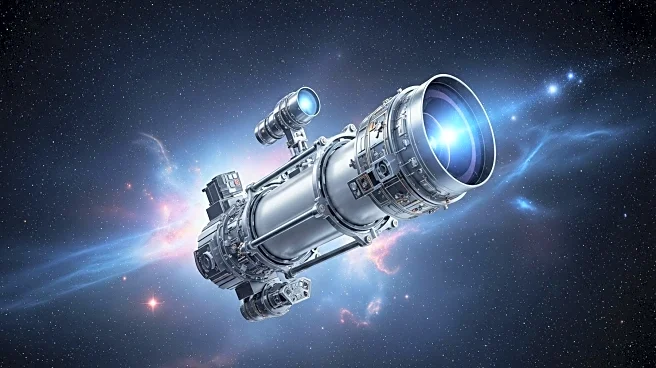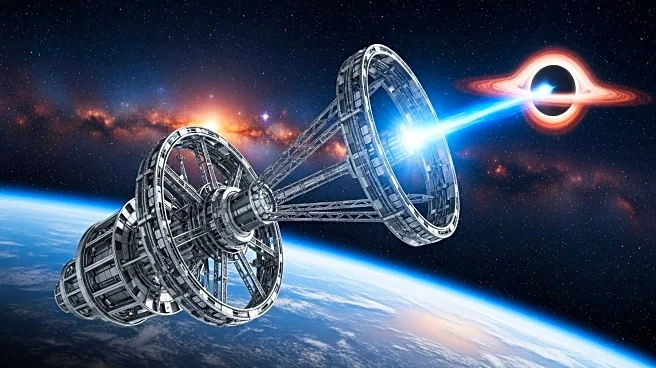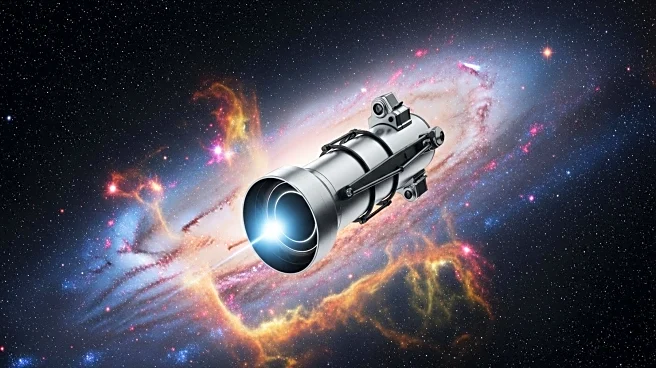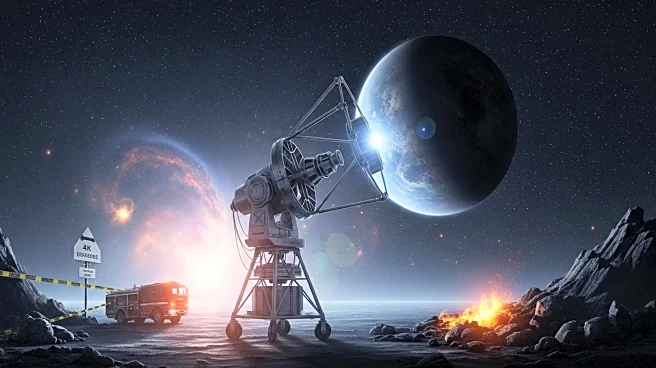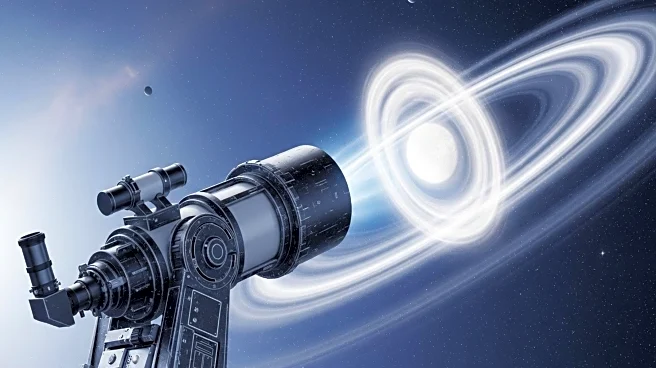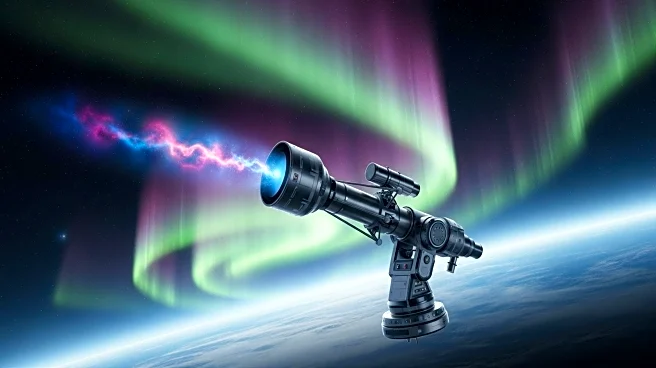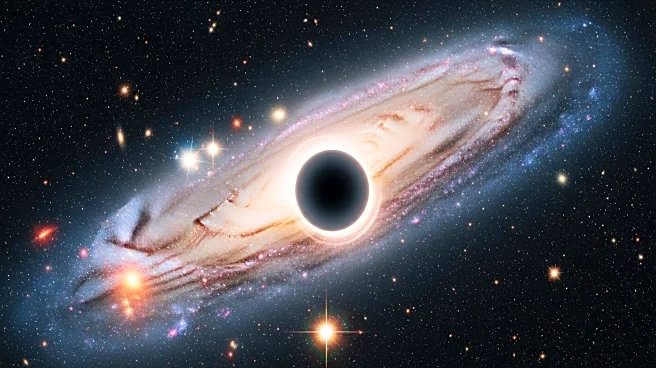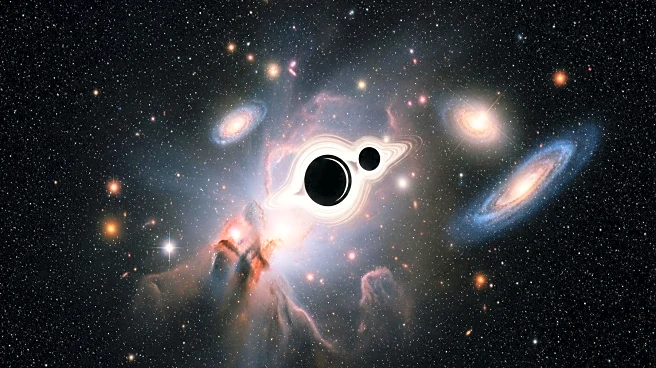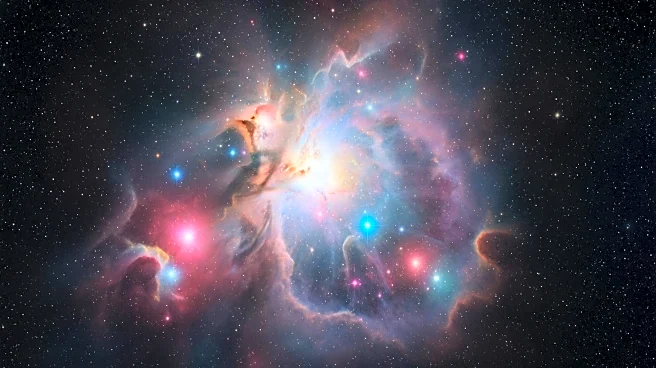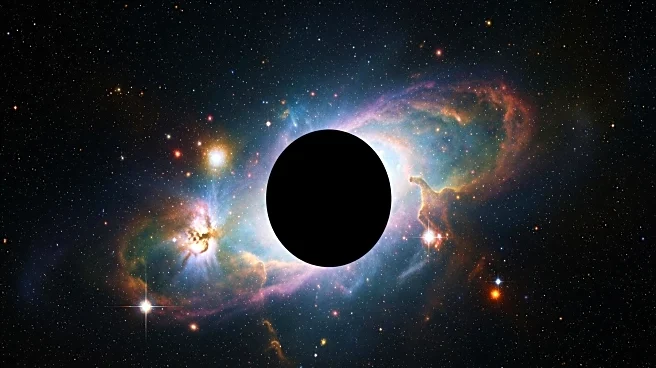What is the story about?
What's Happening?
Astronomers using the James Webb Space Telescope have identified a new class of celestial objects, termed 'black hole stars' or BH*, which may be supermassive black holes enveloped in hot hydrogen gas. This discovery challenges previous interpretations of distant 'little red dots' seen in infrared images, initially thought to be dense, ancient galaxies. The research, led by Anna de Graaff at the Max Planck Institute for Astronomy, suggests these objects could be black hole-powered systems rather than ultra-dense star factories. The findings are based on observations of a standout object nicknamed 'The Cliff,' which exhibits a dramatic Balmer break in its spectrum, indicating a steep rise in brightness across a boundary set by hydrogen atoms. This discovery could reshape our understanding of early galaxy formation and black hole growth.
Why It's Important?
The identification of black hole stars has significant implications for astrophysics, particularly in understanding the formation and growth of galaxies and black holes in the early universe. If these BH* objects are common, it could alter the timeline of galaxy evolution, suggesting that many faint red sources near cosmic dawn are black hole-driven systems rather than dense star clusters. This shift could ease tensions with existing galaxy formation models and provide a new pathway for rapid black hole growth, which is crucial for explaining the presence of billion-solar-mass black holes within the first billion years of the universe. The findings also offer new directions for future astronomical research and observations, potentially refining search strategies for the first luminous structures in the cosmos.
What's Next?
Approved follow-up observations with the James Webb Space Telescope are planned to further investigate 'The Cliff' and other similar candidates. These studies aim to test the BH* model's predictions by obtaining deeper spectra across wider wavelength ranges and setting sensitive X-ray limits. Key questions remain about the formation and maintenance of gas envelopes around these black holes, the mechanisms that refuel the shroud as the core consumes it, and how starlight from host galaxies mixes with the BH* glow. These investigations will help refine models of early galaxy growth and black hole formation, providing insights into the universe's evolution.
Beyond the Headlines
The discovery of black hole stars challenges traditional models of galaxy formation and offers a new perspective on the universe's early development. It suggests that the cosmos may have more complex mechanisms for mass assembly and black hole growth than previously thought. This could lead to a reevaluation of how astronomers allocate observing time and resources, focusing more on black hole-driven systems. The findings also highlight the importance of advanced telescopes like the James Webb in uncovering hidden aspects of the universe, paving the way for future breakthroughs in astrophysics.
AI Generated Content
Do you find this article useful?
